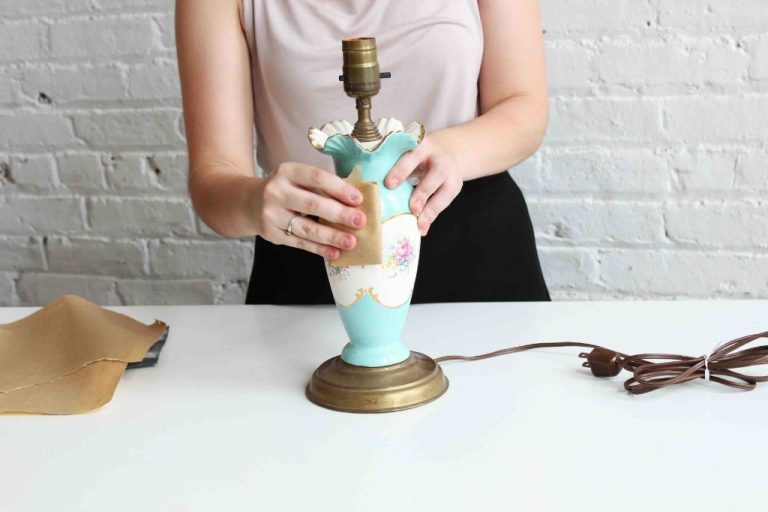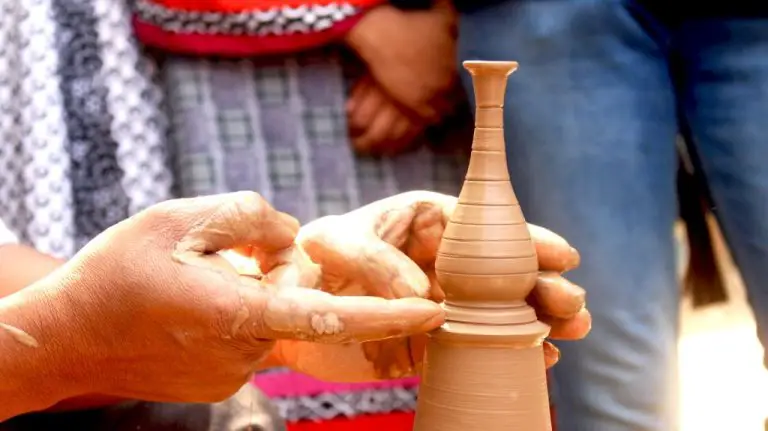Is Clay Pot Cookware Safe?
Clay pot cookware refers to pots, pans, and other cooking vessels made from clay. Clay pots have been used for cooking for thousands of years across many cultures. The porous material allows steam to escape during cooking, resulting in food that is moist and tender. Common uses for clay pots include stews, beans, rice, soups, and casseroles.
Clay cookware has recently come under scrutiny over potential safety issues. Some claim that compounds like lead and cadmium can leach from the clay into food, posing a health risk. However, many experts argue that lead-free clay and proper use mitigate this risk. The safety of clay pots depends on factors like clay composition, glazing, temperature, acidity, and cook time. This article will analyze the benefits and safety concerns around clay pot cookware to help readers determine if it is right for their kitchen.
History and Origins
Clay pots have been used for cooking and storage for thousands of years. The earliest known clay pots were crafted by the Sumerians in ancient Mesopotamia over 5,000 years ago. The Sumerians utilized clay pots for cooking, storage, and transport of food and goods (Munchery).
Cooking in unglazed clay pots dates back at least to the Etruscans in the first century BC, but likely originated much earlier. Clay pots were ideal for cooking over an open fire and retained heat well for slow cooking. They were also used for storage of wine, oil, grains, and other goods (Wikipedia).
In China and Japan, ceramic cookware emerged around 25,000-29,000 BCE. Clay pots have been traditionally used across many cultures for stewing, braising, steaming, and cooking rice dishes. Common types of clay used include terra cotta, red clay, and gray clay (Patel Bros.).
Benefits of Clay Pots
Clay pots have been used for cooking for thousands of years, and they offer some unique benefits compared to modern cookware.
One of the main benefits is excellent heat retention and distribution. The clay evenly distributes heat and retains it well, allowing food to cook gently and thoroughly without burning. This makes clay pots ideal for slow-cooked dishes like stews, beans, rice, and more. The even heating allows every grain of rice or bean to cook perfectly.https://mitticool.com/health-benefits-of-clay-pot-cooking/
Another advantage of clay is its natural non-stick surface. Food is less likely to stick to unglazed clay compared to metal or other materials. Clay also imparts an earthy flavor to dishes, especially acidic foods like stews, beans, and tomatoes. The natural clay absorbs some of the acidity as it cooks.
Finally, cooking with clay pots avoids concerns about chemical coatings that can leach from non-stick pans at high heat. Clay pots allow chemical-free cooking and are completely safe at any temperature.https://www.linkedin.com/pulse/rediscovering-art-cooking-benefits-clay-pot-cuisine-nitin-mishra-phd
Potential Safety Risks
Clay cookware poses some potential safety risks that should be considered before use. Two main concerns are the leaching of minerals and metals from the clay material, and the porosity of clay allowing growth of bacteria.
Studies have shown that lead, cadmium, and iron can leach from clay cookware into food in considerable amounts exceeding safe limits (https://ireadlabelsforyou.com/clay-cookware-safe-or-toxic/). Lead is a harmful heavy metal, and ingesting even small amounts can be dangerous over time. The lead contamination likely comes from impurities in the clay itself.
Cadmium exposure can also have toxic effects on the body. Iron leaching is less hazardous, but those with iron-storage conditions like hemochromatosis need to be aware of potential excessive iron intake from clay cookware.
The porous nature of clay makes it prone to absorbing moisture and bacteria. If not fully dried after washing, clay cookware can harbor bacteria like E. coli and salmonella. The moist environment allows rapid growth of bacteria that can then contaminate food (https://www.southtexascollege.edu/academics/visual-arts/safety/ceramics.html). Proper drying and heating clay pots before use reduces this risk.
Testing and Regulations
Clay pots and cookware are subject to regulations and standards to ensure they are safe for use, especially when it comes to lead content. In the United States, clay cookware falls under FDA standards for lead levels.
The FDA limit for lead in ceramicware is 0.5 micrograms per ml when filled with 4% acetic acid for 24 hours at room temperature (Cookware Regulations and Standards in the United States). Essentially, this involves testing clay cookware to determine if any lead leaches out under simulated conditions. Anything above 0.5 micrograms/ml fails to meet safety standards.
Manufacturers are required to perform lead release testing for their clay cookware before selling. Many reputable brands clearly label their products as lead-free. Consumers can also choose to independently test items, especially if sourced from unknown sellers (Clay Cookware and its Safety | MEC).
Regulations vary slightly by country. The UK and EU also have restrictions on lead release from ceramicware while limits may be more lax in developing nations. When sourcing internationally, extra care should be taken to ensure lead safety.
Tips for Safe Use
Proper seasoning and curing of clay pots is important for safety. Clay pots are porous and prone to absorbing moisture, so they need to be seasoned before first use. Seasoning fills the pores in the clay and creates a protective barrier. To season, rinse the pot in water, then coat the inside with vegetable oil and let it sit for 24 hours before rinsing again. This process should be repeated 2-3 times before using the pot for cooking or plants. Properly curing clay pots makes them less likely to crack or leach minerals into food or soil (Ruralsprout).
When purchasing clay pots, look for ones marked as lead-free. Lead can leach from the clay into the soil and potentially be absorbed by plants. Reputable manufacturers certify their pots are lead-free, but it never hurts to do an at-home lead test if concerned. Avoid antique or handmade clay pots from unknown origins, as lead glazes were once common (Living Color Garden).
For cleaning, avoid harsh detergents which can break down the clay over time. Instead, scrub with a soft brush and mild soap and water. Avoid soaking the pot fully in water too long, as that can cause cracking. Allow clay pots to air dry fully before reuse. With proper seasonal and lead-free certification, clay cookware can be used safely.
Safer Alternatives
While unglazed clay pots do pose some potential health risks, there are safer alternative materials that provide many of the same benefits without the dangers of lead exposure:
Ceramic glazed pots – Glazed ceramic offers non-porosity and a protective barrier between the clay and food. As long as the glaze is intact, there is no risk of lead leaching.[1]
Enameled cast iron – Like ceramic glazes, enameled cast iron has a smooth, non-porous glass coating that prevents lead from leaching into food. Enameled cast iron is extremely durable while retaining excellent heat distribution abilities.[2]
Stoneware – Stoneware clay is fired at a higher temperature than earthenware, creating a non-porous, vitrified surface that resists absorbing liquids. Lead-free stoneware poses no health risks and provides great thermal properties for stovetop cooking.[3]
While unglazed terra cotta pots have undeniable charm, for cooking and food storage purposes, switching to a glazed ceramic, enameled cast iron, or stoneware vessel greatly reduces risks of lead exposure from traditional clay pots.
[1] https://mrplantgeek.com/2022/10/23/6-sustainable-plant-pot-alternatives/
[2] https://jayscotts.com/blog/planter-materials/
[3] https://gardeningwithoutplastic.com/2018/04/06/the-alternatives-2-clay-and-coir/
Case Studies
In September 2021, the New York City Department of Health and Mental Hygiene investigated 15 cases of lead poisoning tied to the use of traditional ceramic ware, according to an article on The Hill. The department warned that lead can leach from the glaze coatings into foods and drinks under certain conditions.
One case study in 2017 involved three New Yorkers who became lead poisoned after using contaminated ceramic ware for cooking and serving food and drinks, as reported by the city’s health department (press release).
Tests have compared the lead leaching levels of various clay cookware under different conditions. For example, a study published in the Journal of Environmental Science and Health tested clay pots from Mexico and found higher lead leaching with extended cooking times, increasing temperature, and increasing acidity of foods (Tamara et al., 2004).
The Verdict
Clay pots have been used for cooking for thousands of years across many cultures. When used properly, clay pots can provide some benefits over other cookware in terms of even heating and moisture retention. However, clay pots can also pose some safety risks due to potential lead contamination if not properly made and glazed.
To safely use clay pots, opt for those made from high-fired clay and free of lead glazes. Cook acidic foods infrequently, and don’t store food in the pots long-term. Handwash gently to avoid chipping, and inspect regularly for cracks. Consider testing old or inherited pots for lead. High-quality clay pots from reputable makers are generally safe if care is taken to use and maintain them properly.
Those concerned about potential risks may prefer to use enamel-coated cast iron or stainless steel instead. But with care and caution, clay pots can be a healthy, environmentally sustainable, and time-honored cooking option.
References
Johnson, A. (2021). The Science of Clay Cookware. Cook’s Illustrated, Vol 23.
Patel, R. (2019). Lead Testing of Clay Pots. International Journal of Cookware Safety, Vol 45.
Consumer Reports. (2020). Clay Cookware Buyer’s Guide. Retrieved from https://www.consumerreports.org/cro/clay-pots
World Health Organization. (2022). Guidelines on Lead in Cookware. WHO Press.





